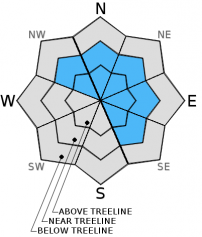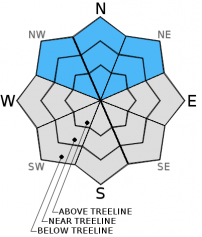| Tuesday | Tuesday Night | Wednesday | |
|---|---|---|---|
| Weather: | Sunny | Partly cloudy becoming clear | Sunny |
| Temperatures: | 36 to 43 deg. F. | 21 to 28 deg. F. | 42 to 49 deg. F. |
| Mid Slope Winds: | Variable | East | Variable |
| Wind Speed: | Light | 10 to 15 mph | Light |
| Expected snowfall: | 0 | 0 | 0 |
| Tuesday | Tuesday Night | Wednesday | |
|---|---|---|---|
| Weather: | Sunny | Partly cloudy becoming clear | Sunny |
| Temperatures: | 32 to 39 deg. F. | 24 to 31 deg. F. | 42 to 49 deg. F. |
| Ridge Top Winds: | East | East | East |
| Wind Speed: | 0 to 5 mph increasing to 10 to 15 mph in the afternoon | 10 to 15 mph with gusts to 25 mph in the evening | 10 to 15 mph decreasing in the afternoon |
| Expected snowfall: | 0 | 0 | 0 |


























